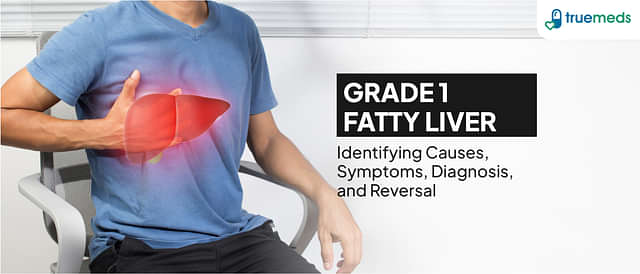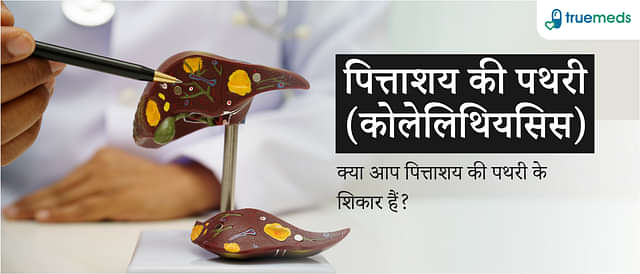Understanding the different types of Hepatitis: An Overview
Last updated on : 21 Apr, 2025
Read time : 6 min
Hepatitis means the inflammation of the liver. The liver in the human body is responsible for processing nutrients, filtering the blood and fighting infections. When the liver is damaged, and its function is altered, it may no longer function normally. Hepatitis may be due to heavy use of alcohol, toxic/harmful substances and some harmful medical conditions.
While we know the inflammation of the liver causes Hepatitis at times, it does not stop at this stage. It progresses to fibrosis or cirrhosis and liver cancer. The most common cause of Hepatitis is virus attacks.
Read more- Fatty liver diet: Foods to eat and avoid
Types of Hepatitis
Six main types of hepatitis viruses have been identified. Including:
- Hepatitis A
- Hepatitis B
- Hepatitis C
- Hepatitis D
- Hepatitis E
- Hepatitis G
1. Hepatitis A
The Hepatitis A virus is also called HAV. Hepatitis A spreads through oral and faecal contact or when food is contaminated with faecal matter and through certain sex practices.
Hepatitis A infections are usually mild; most recover completely and remain immune to subsequent HAV infections. A few of the HEpatitis A infections are severe and life-threatening.
Hepatitis A infection is mainly seen in areas with poor sanitation. Safe practices and effective vaccination are preventive treatments for HAV.
Symptoms of Hepatitis A
Once infected, the signs begin to appear in 2-7 weeks, and symptoms last for two months or more. Common symptoms of hepatitis A are
- Feeling very tired
- Feeling sick inside stomach and not feeling hungry
- Loss of weight without intention
- Pain on the right side of the belly, below the ribs(abdominal bones)
- Fever
- Muscle pains
- Yellow skin, dark urine and clay-coloured stools
Diagnosis is usually made through symptom assessment and blood tests.
Treatment of Hepatitis A includes
- While hepatitis A mostly goes away on its own. When the infection is present, follow these practices.
- Try to recover completely from tiredness, as half recovery will lead to the infection not getting entirely cured. So, slow down and recover regular energy levels through adequate rest and healthy food.
- Drink water adequately to avoid dehydration. Drink juices and broth if you can digest them.
- One of the common symptoms of hepatitis A is the absence of hunger. Eating nutritious food despite not feeling hungry is recommended to help you maintain the required energy levels.
- Do not consume alcohol and illegal drugs as this will worsen the liver problem.
- Do not change the medicine without consulting your doctor.
Prevention of Hepatitis A
Wash your hands properly after using the bathrooms and changing diapers.
Tell the people with whom you have sex about hepatitis A. They can inform the doctor and take a vaccine if necessary.
Hepatitis A is only a one-time infection as once after infection; you will not get the Hepatitis A infection again.
2. Hepatitis B
Hepatitis B is also called HVB. The transmission of hepatitis B occurs through the exposure of blood and body fluids like blood, body fluid exposure such as blood, semen, vaginal secretions and saliva. It is also transferred from the infected mother to the baby.
It has a wide variety of clinical presentations. It can be a mild, severe or chronic liver disorder, which may lead to liver damage or even death.
The Hepatitis B virus infects the liver. Most adults get it for a short time and then get better. It is called acute Hepatitis. Sometimes, the virus causes a long-term infection, i.e. chronic hepatitis B and can damage the liver over time.
Both acute and chronic hepatitis B are devoid of any symptoms. If any symptoms are present, they are;
- Extreme tiredness
- Mild fever
- Headache
- Loss of appetite
- Nausea & vomiting
- Pain on the right side of the belly, below the ribs(abdominal bones)
- Yellow skin, dark urine and clay-coloured stools
Diagnosis is made through physical examination and blood tests. Blood tests are done to test the presence of infection of hepatitis B and if there is any liver damage.
Treatment of Hepatitis B
A course of treatment is based on how active is the viral infection inside the body. In case of acute infection, just home treatment like eating nutritious food, drinking plenty of fluids, avoiding alcohol and taking rest will reduce the infection.
Additionally, if you are unsure of hepatitis B infection, then get a hepatitis B immunoglobulin injection and hepatitis B vaccine within seven days of infection. For chronic infection, the purpose of treatment is to stop the liver damage and further multiplication of the virus inside the body.
3. Hepatitis C
Hepatitis C infection is also called HCV. The infection of hepatitis C is mainly due to the transmission of infected blood and sexual contact.
The symptoms of hepatitis C are mild and gradual and often lead to liver damage. There are no vaccines for hepatitis C infection prevention. Identifying or knowing if you are infected with hepatitis C is not possible and usually leads to chronic liver disease.
Symptoms of Hepatitis C
The symptoms are rare for hepatitis C, but if they develop, these include pain in joints and stomach, tiredness, dark urine, yellow skin, itchy skin and muscle pains. As hepatitis C can cause liver damage, the liver damage signs are redness of the palm, and expansion of blood vessels just below the skin, which appears as red spiders in the chest, shoulders and face region, swelling of legs and feet, shrinking of muscles and bleeding of blood vessels in the digestive tract.
Treatment of Hepatitis C
The treatment is mandatory for patients with hepatitis C infection. Both acute and chronic hepatitis C infections need care and treatment. Take vaccines in case of doubt of hepatitis C infection; antivirals help reduce chronic hepatitis C infection.
4. Hepatitis D
It is also called HCD. Hepatitis D infection is possible only in case you have hepatitis B infection. Infection with hepatitis D may lead to complete liver damage. Transmission of hepatitis D is the same as hepatitis B.
5. Hepatitis E
It is also called HCE. Hepatitis E is similar to Hepatitis A. It occurs due to faecal-oral route contamination and is less common than hepatitis A. There is no vaccine for hepatitis E infection now.
6. Hepatitis G
It is called HCG. It is a new type of hepatitis infection with little to no symptoms. It is found in people who are IV drug users, blood clotting disorders and patients with haemodialysis due to renal failure. Very little is known about it.
Conclusion
Hepatitis is inflammation of the liver. Viruses, alcohol or substance use, can cause it. Six types of Hepatitis may spread due to infected blood, body fluids and sexual contact. Symptoms are mostly common for all hepatitis infections; they are tiredness, muscle pain, pain in joints and the right side of the stomach and yellowish skin. The treatments are based on the conditions, like how active the virus is and if it’s acute or chronic. In many cases, Hepatitis is self-healing and rarely leads to liver failure and death.
References
- Hepatitis [Internet]. Who. int. [cited 2023 Jul 22]. Available from: https://www.who.int/news-room/questions-and-answers/item/hepatitis
- What is viral Hepatitis? [Internet]. Cdc.gov. 2023 [cited 2023 Jul 22]. Available from: https://www.cdc.gov/hepatitis/abc/index.htm
- Stanford health care [Internet]. Stanfordhealthcare.org. [cited 2023 Jul 22]. Available from: https://stanfordhealthcare.org/medical-conditions/liver-kidneys-and-urinary-system/hepatitis/types.html
Disclaimer
Our healthcare experts have carefully reviewed and compiled the information presented here to ensure accuracy and trustworthiness. It is important to note that this information serves as a general overview of the topic and is for informational purposes only. It is not intended to diagnose, prevent, or cure any health problem. This page does not establish a doctor-patient relationship, nor does it replace the advice or consultation of a registered medical practitioner. We recommend seeking guidance from your registered medical practitioner for any questions or concerns regarding your medical condition.
Popular Articles
Recent Articles
Top-Selling Medicines:
...View more
Top-Selling OTC:
...View more
Company
About UsHealth ArticleHealth StoriesDiseases & Health ConditionsAyurvedaAll MedicinesAll BrandsNeed HelpFAQSubscribe
Registered Office Address
Grievance Officer
Download Truemeds

Contact Us
Our customer representative team is available 7 days a week from 9 am - 9 pm.
v3.7.31
2025 - Truemeds | All rights reserved. Our content is for informational purposes only. See additional information.
Our Payment Partners









































